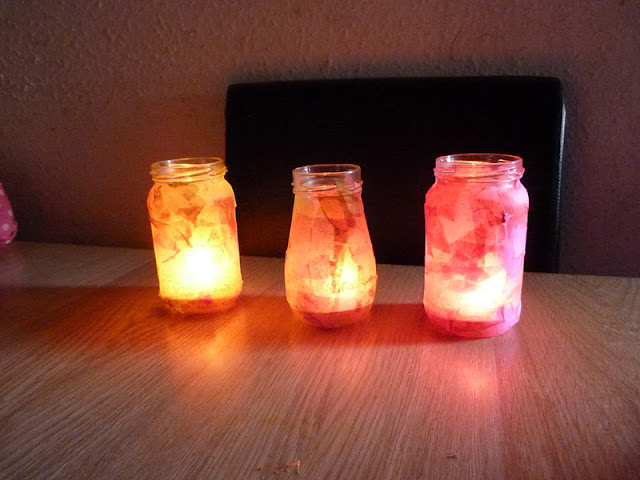This mixes two of the projects I have done in the past together. It also covers the science of fire and what fire needs to burn!

All you need to do is follow my tutorial on how to make a Christmas Lantern. Put a candle in as it suggests, look how pretty the glow is! Carefully feel the heat against the glass that the flame is emitting!
Fires need heat, oxygen and fuel in order to ignite and continue burning. If any of these factors are absent, the fire will be extinguished.
These three factors: heat, oxygen and fuel, are referred to as the 'fire triangle' as all of the components is dependent on the other.
Fire is a natural occurrence that takes place whenever a flammable fuel comes into contact with oxygen at very high temperatures and it normally produces smoke.
My girls wanted to keep them alight in their room all night. I discussed with them the dangers of this. We have cats that could knock them over and many flammable things in their room which could make it dangerous. So I scratched my head and thought of...
We then discussed why, when we put a lid on the jars with the candles in did the flame go out, but when we put the lid on the LED light it didn't?
OXYGEN! without oxygen the flame will go out, it is a natural energy whereas the LED required only the circuit not to be broken to continue its glow!
My girls loved it and they still use them a year on from the day we first done this project. In fact, Honi did want to make one with me the other day so it will be on my list of things to do tomorrow hence writing it up tonight.
FIRE FACTS
- Fire is a chemical reaction that releases light and heat.
- Flames are the part of a fire which we can see, they can be different colours, depending on the substance, the fuel, which is burning. as you can try out in the flame test.
- The average candle burns at 1000 degrees C
- Forest fires can be extremely destructive and are dangerous to both humans and wildlife.
- Fire is also an important ecological process that stimulates growth
- Fire is very dangerous to humans and can make our skin blister or can hurt us badly enough to cause death. It is always important to be careful round fire.
- Fire is important to humans as we use it for heat, cooking and much more
- Water can make fires worse. Fire extinguishers are often used to control fires by discharging water, foams, carbon dioxide, dry chemicals or other substances.


Thanks for this, Lisa - I keep meaning to cover fire hazards with my girls and this has just reminded me!
ReplyDeleteCool! :)
Delete